Instructions for Side by Side Printing
- Print the notecards
- Fold each page in half along the solid vertical line
- Cut out the notecards by cutting along each horizontal dotted line
- Optional: Glue, tape or staple the ends of each notecard together
Unit Operations in Mineral Processing
front 1 COMMINUTION | back 1 Size reduction by particle breakage |
front 2 Comminution usually accounts for more than ____ total power | back 2 40 % to 50% |
front 3 Only about ____ of the energy input is used to comminute | back 3 3% – 5 % |
front 4 Problems associated with comminution: | back 4 ➢ It is mechanically a wasteful process. |
front 5 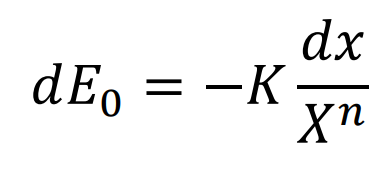 | back 5 An empirical relationship between energy consumed during size reduction and particle size. |
front 6  Rittinger’s Law | back 6 energy of breakage ∝ amount |
front 7  Kick’s Law | back 7 energy required ∝ reduction in volume of the particles concerned |
front 8  Bond’s Law | back 8 energy required ∝ new crack |
front 9  Work Index | back 9 Energy required to reduce one ton of ore from a very large size to 100µm |
front 10 Jaw Crusher | back 10 1) Blake |
front 11 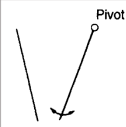 BlakeS | back 11 Movable jaw is pivoted at the top |
front 12 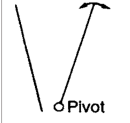 Dodge Type | back 12 Movable jaw is fixed at the bottom |
front 13 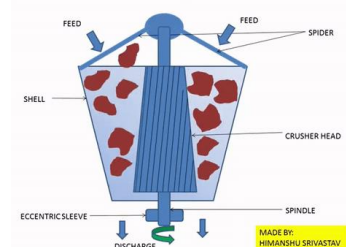 Relative motion of the crushing faces is | back 13 gyratory crusher |
front 14 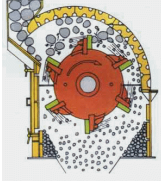 Comminution by impact; sharp blows on free-falling rock | back 14 IMPACTORS |
front 15 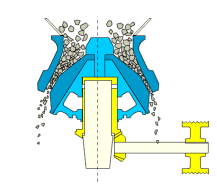 Modified gyratory crusher that yields smaller product | back 15 CONE CRUSHERS |
front 16 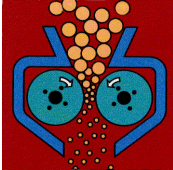 Consists of two horizontal cylinders | back 16 ROLL CRUSHERS |
front 17 GRINDING | back 17 Last stage in comminution |
front 18 Grinding Size Reduction | back 18 impact + abrasion |
front 19 What is used when grinding | back 19 balls or rods |
front 20 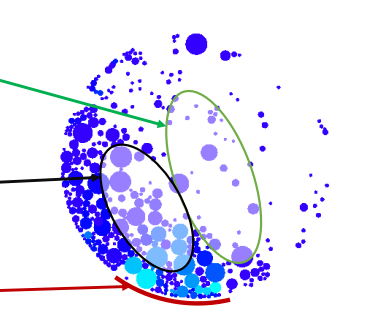 Green | back 20 Cataracting |
front 21  Black | back 21 Cascading |
front 22  Red | back 22 Centrifuging |
front 23 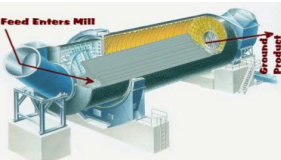 Uses cast iron rods | back 23 Rod Mill |
front 24  Uses forged steel | back 24 Ball Mill |
front 25  The action of the ore grinding upon itself with small amount of ball charge | back 25 Semi-autogenous Mill |
front 26 SIZING | back 26 Selection of materials based on their size |
front 27 SCREENING (Industrial Screening) | back 27 Use of screening equipment (screens) |
front 28 Screen equipment are classified as | back 28 stationary and moving |
front 29 SCREENING objectives | back 29 To optimize the feed of the comminution stage by preventing
the |
front 30 Sizing/Classifying | back 30 To separate particles by size |
front 31 Scalping | back 31 To remove coarsest size fractions in the feed material |
front 32 Grading | back 32 To prepare a number of products within specified size ranges |
front 33 Media recovery | back 33 For washing magnetic media from ore in dense medium circuits; or to retain grinding media inside grinding mills |
front 34 Dewatering | back 34 To drain free moisture from a wet sand slurry |
front 35 De-sliming/De-dusting | back 35 To remove fine material, generally below 0.5 mm, from a wet or dry feed |
front 36 Trash removal | back 36 Usually to remove coarse wood fibers or tramp material from a slurry stream |
front 37  Static Grizzlies | back 37 • 35 – 50° deck angle |
front 38 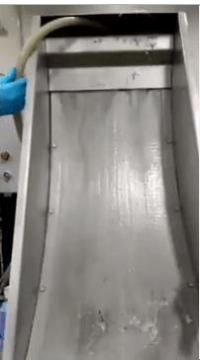 Sieve Bends | back 38 • >50μm, 180m3/hr |
front 39 stationary screens | back 39 1. Static Grizzlies |
front 40 moving screens | back 40 Grizzly Screens |
front 41  Grizzly Screens | back 41 • Usually screens very coarse |
front 42  Trommels | back 42 • Comprised of a cylindrical screen |
front 43 CLASSIFICATION | back 43 LESS Than 1mm |
front 44 Wet classification | back 44 usually uses water, generally applied to |
front 45 CLASSIFIERS | back 45 • used for particles 1mm or less |
front 46 CLASSIFIERS categorized by force field applied to unit | back 46 either gravitational or centrifugal |
front 47 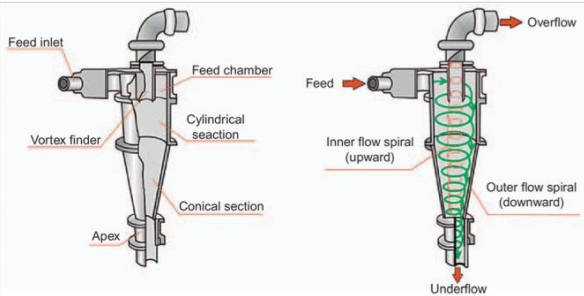 Hydrocyclone | back 47 Utilizes centrifugal force to accelerate settling rate of particless |
front 48 gravitational classifiers | back 48 Spiral Classifier |
front 49  Spiral Classifier | back 49 A continuously revolving spiral moves the sands up the slope |
front 50  Rake Classifier | back 50 Uses rakes actuated by an eccentric motion, which causes them to dip into the settled material and move up the incline for a short distance |
front 51 GRAVITY CONCENTRATION | back 51 • Most simple and economical of all concentration methods |
front 52 Dense Media | back 52 Particles are placed in a |
front 53 Vertical Current | back 53 Stratification of mineral |
front 54 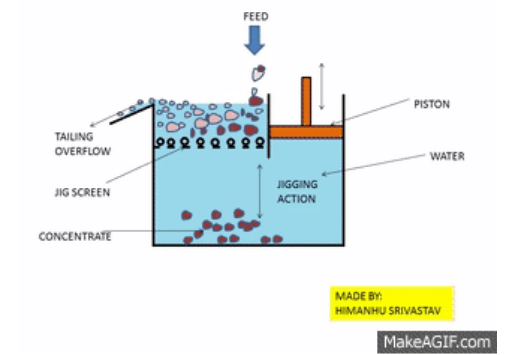 | back 54 Jigging |
front 55 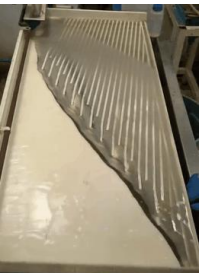 | back 55 Shaking Table |
front 56  Separation via altering surface-chemical properties of minerals | back 56 FROTH FLOTATION |
front 57 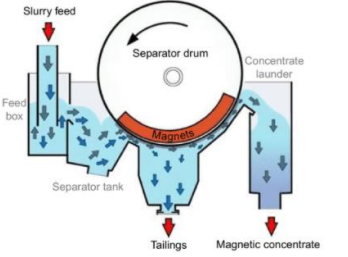 • Uses the difference in magnetic | back 57 Magnetic Separation |
front 58  Uses the difference in electrical | back 58 High Tension Separation |
front 59 DEWATERING | back 59 Solid – Liquid Separation |
front 60 Dewatering (combination of the | back 60 Sedimentation |
front 61 Sedimentation | back 61 Increases concentration |
front 62 Filtration | back 62 Uses a porous medium that blocks solids (filter cake) and allows liquids (filtrate) to pass through. |
front 63 Thermal Drying | back 63 Final operation in a mineral processing |
front 64 Sedimentation | back 64 Coagulation |
front 65 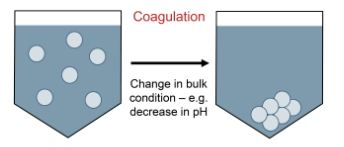 Coagulation | back 65 Neutralizes charged particles so that they |
front 66 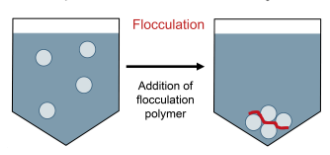 Flocculation | back 66 Uses long-chain polymers to bridge particles until they areheavy enough to settle |
front 67 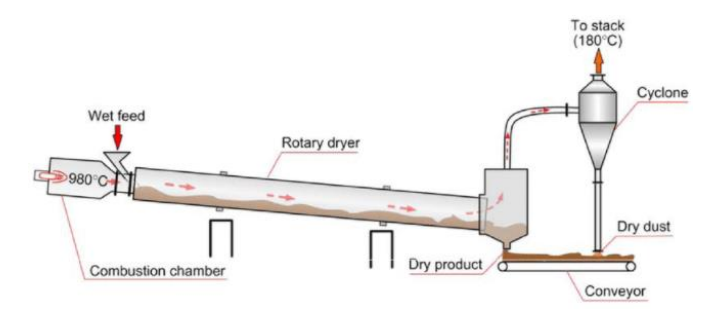 | back 67 THERMAL DRYING | rotary dryer |
front 68 ORE HANDLING | back 68 Costs account for 30 – 60% of total delivered price of raw materials |
front 69 ORE TRANSPORTATION | back 69 Minimum upward and horizontal movement |
front 70 ORE TRANSPORTATION (Basic Philosophy) | back 70 • The use of gravity should be maximized. |
front 71 ORE TRANSPORTATION | dry ore | back 71 Chutes |
front 72 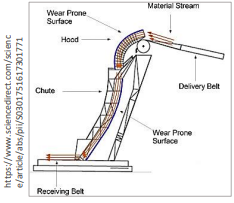 | back 72 Chutes |
front 73  | back 73 (Standard Rubber) Belt Conveyor |
front 74 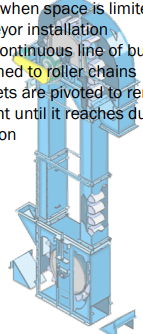 | back 74 Gravity Bucket Elevators |
front 75 ORE STORAGE | back 75 Necessity arises from successive processing units performing
at |
front 76 ORE STORAGE Depends on | back 76 ▪ The equipment in the mill / method of operation |
front 77 ORE STORAGE Accomplished by having | back 77 stockpiles, and using bins or tanks |
front 78 ORE STORAGE | back 78 Stockpiles |
front 79 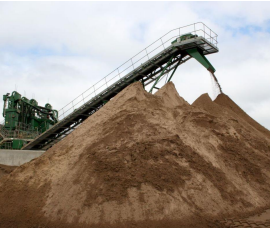 Can be reclaimed by front-end | back 79 Stockpiles |
front 80 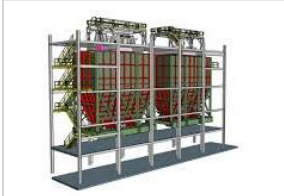 • Used as intermediate between | back 80 Ore Bins |
front 81 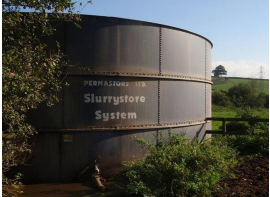 • For storing suspensions of fine | back 81 Slurry Tanks/Conditioning Tanks |
front 82 ORE FEEDING | back 82 Desired for delivery of uniform stream of ore |
front 83 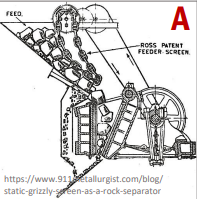 • Used for smooth control of bin discharge | back 83 A. Chain Feeders |
front 84 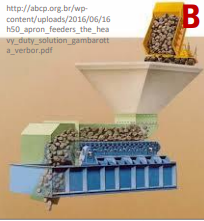 • Essentially a conveyor with abrasion-resistant steel pans attached
in series | back 84 B. Apron Feeders |
front 85 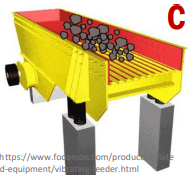 • Remove fines from coarse | back 85 C. Vibrating Grizzlies |
front 86 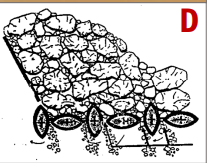 • Long elliptical bars in alternate | back 86 D. Elliptical Bar Feeder |
front 87 Hand Sorting | back 87 used when in abundance of cheap manual labor, or additional equipment installation is not economically justified |
front 88 Magnetic Separators | back 88 situated above conveyors to pick up large pieces of tramp iron and steel; used w/ metal detectors |
front 89 Vibrating Scalping Screens | back 89 removal of wood from pulp (wood causes choking) |
front 90 Washing | back 90 ▪ removal of slimes (very fine particles) |
front 91 Measures of Efficiency | back 91 DEGREE OF LIBERATION |
front 92  DEGREE OF LIBERATION | back 92 The percentage of a mineral or phase occurring as free particles in relation to the total of the minerals in the ore |
front 93 MESH-OF-GRIND | back 93 The size up to which the ore is ground to ensure
sufficient |
front 94 PARTICLE SIZE ANALYSIS | back 94 Control of quality of grinding |